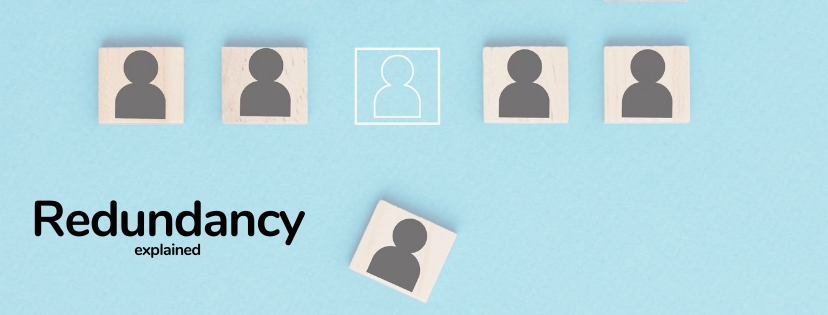If a Company Goes Bust Who Pays Redundancy? Legal Insights for UK Personnel
If a Company Goes Bust Who Pays Redundancy? Legal Insights for UK Personnel
Blog Article
Investigating the Interaction Between Firm Redundancy and Organizational Adaptability for Future Development
In the vibrant landscape of today's company world, the detailed relationship in between business redundancy and business flexibility arises as an important variable for continual growth and success. Companies typically encounter the obstacle of striking a fragile equilibrium in between maintaining a level of redundancy to reduce dangers and promoting versatility to react quickly to the ever-evolving market needs.
Relevance of Firm Redundancy
Firm redundancy is a crucial element that enhances business strength and mitigates functional threats. By including redundancy actions within the business structure, business can much better stand up to unanticipated interruptions and changes in the service atmosphere. Redundancy works as a tactical buffer, permitting firms to adjust and respond efficiently to unexpected obstacles without endangering necessary procedures.
One key aspect of the relevance of firm redundancy is its function in guaranteeing continuity throughout times of situation. When confronted with unexpected changes or emergency situations, repetitive systems, resources, or personnel can action in to preserve essential features and avoid widespread disturbances. This continuity not just safeguards the business's credibility and consumer depend on but additionally lessens financial losses and functional downtime.

Strategies for Organizational Adaptability

Creating versatile business structures that allow for quick changes to market characteristics and client requirements is important for staying affordable in a quickly developing environment. By proactively identifying possible interruptions and opportunities, companies can proactively adjust and flourish in an ever-changing service landscape.
Balancing Redundancy and Flexibility
Attaining an unified equilibrium in between functional redundancy and organizational versatility is extremely important in navigating the intricacies of a dynamic service atmosphere. Striking the appropriate balance between redundancy and versatility is a fragile procedure that calls for a deep understanding of the organization's goals, market characteristics, and risk tolerance.
To achieve this balance, anchor companies need to conduct regular assessments of their operations to identify areas where redundancy is necessary for risk mitigation and where adaptability can drive innovation and growth. Implementing adaptable frameworks, cultivating a society of constant discovering and enhancement, and motivating open communication across all degrees of the company are crucial methods to balance redundancy and adaptability effectively. By aligning these 2 essential components, business can position themselves for lasting development and success in an ever-changing service landscape.
Situation Studies on Adjustment Success
In checking out circumstances of successful organizational adjustment, it ends up being apparent that the interplay in between operational redundancy and adaptability is a specifying aspect in shaping resistant organizations. One compelling case research is that of Netflix. At first a DVD rental solution, Netflix demonstrated remarkable flexibility by transitioning into a streaming system when digitalization interrupted the industry. By purposefully buying modern technology and material creation, Netflix not just survived yet flourished in a swiftly evolving market. An additional standout example is Amazon. Beginning as an online book shop, Amazon continuously adapted its organization design, increasing into varied sectors such as cloud computing and artificial intelligence. This adaptability allowed Amazon to remain in advance of competitors and fulfill changing consumer needs. Lastly, Adobe supplies a significant illustration of effective adjustment. The company moved from marketing software licenses to a subscription-based design, making certain recurring profits streams and boosted customer interaction. These study underscore the importance of functional redundancy paired with business adaptability in promoting long-lasting development and competition.
Building Resilience for Future Development
Structure durability for future growth needs a tactical placement of operational procedures with market dynamics and arising patterns. Companies need to adapt to transforming environments by cultivating a culture of adaptability, development, and continual enhancement.
In addition, promoting solid relationships with stakeholders, such as consumers, employees, vendors, and the community, is crucial for maintaining and weathering unpredictabilities trust and More about the author support throughout turbulent times. Efficient interaction and transparency play an important duty in building durability, as they aid align expectations and assist in cooperation in navigating uncertainties.
Moreover, companies require to prioritize knowing and growth campaigns to upskill employees and furnish them with the needed devices to adjust to changing situations. By spending in their labor force, firms can boost their adaptability and agility, eventually enhancing their durability for lasting future development.
Verdict

In click to read more the vibrant landscape of today's company globe, the intricate connection in between company redundancy and organizational flexibility emerges as a vital element for sustained growth and success. Firms frequently encounter the obstacle of striking a delicate balance in between maintaining a level of redundancy to alleviate threats and fostering adaptability to respond promptly to the ever-evolving market needs.To achieve this balance, business require to perform normal assessments of their operations to determine locations where redundancy is essential for threat mitigation and where adaptability can drive advancement and development.In verdict, the interaction in between firm redundancy and organizational adaptability is essential for future growth. Building durability with a combination of redundancy and adaptability will make sure that firms are prepared for the challenges of the future.
Report this page